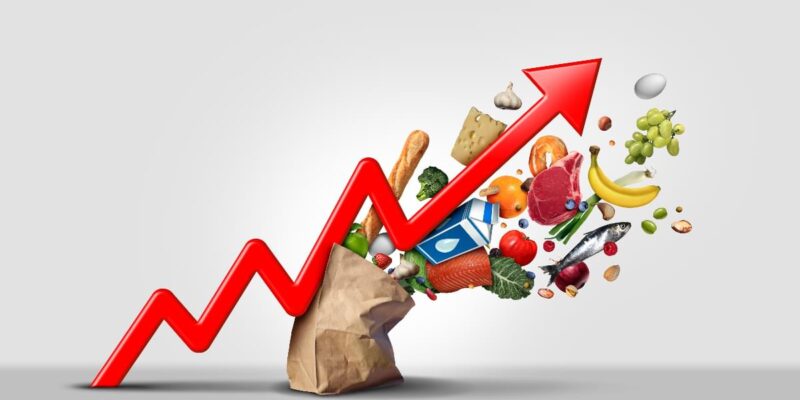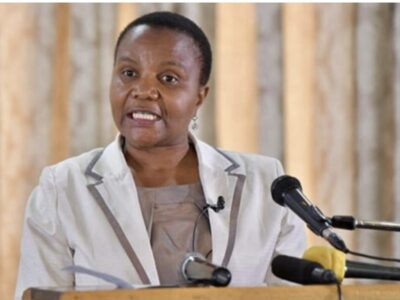Zimbabwe’s annual inflation in local currency surged to 92.1% in May, up from 85.7% in April, as the Reserve Bank of Zimbabwe (RBZ) battles to contain soaring prices driven by rising costs of food and basic goods. Meanwhile, the US dollar-denominated inflation rate dropped to 13.9% in May from 14.4% the previous month, highlighting the stark divide in the country’s dual-currency economy.
Economists warn that without urgent policy interventions, the Zimbabwe Gold (ZiG) inflation trend could persist until August, further eroding purchasing power and economic stability.
By Gamuchirai Mapako
“We expect the ZiG inflation to continue probably until August this year in the event that the exchange rate remains relatively stable. We have been seeing some pressure on food prices, fuel, utilities, housing, and energy. This has contributed to the ZiG inflation. It was expected in my view given that last year’s exchange rate was relatively stable from April to September, then went upwards from September going forward,”
said economist Dr. Prosper Chitambara attributing the rising ZiG inflation to lingering effects of exchange rate volatility.
Chitambara emphasized that exchange rate stability and controlled money supply growth are critical to curbing inflation.
“For as long as we can ensure exchange rate stability, we will achieve price stability. This also depends on the money supply growth. These two are critical if the authorities can manage them and control them prudently, they will bring inflation down. They need to continue with tight monetary and fiscal policy stances, control unsustainable growth in money supply, control public spending, and enhance the efficiency of public spending.”
He warned that fiscal and monetary policies must align to prevent derailing progress.
Economist, Vince Musewe also argued that inflation is largely driven by market expectations, exchange rate pressures, and rising business costs.
“US$ exchange rates, increased costs of doing business, and imports impact final prices in the shops. It is futile to try and blame any one of these. However, expectations seem to be playing a significant role, driven by political uncertainties. As long as there are doubts about the future, prices tend to go up,” Musewe said.
Malone Gwadu, another economist, noted that Zimbabwe is still recovering from the September 2024 ZiG devaluation, which triggered price adjustments across the economy.
Gwadu explained that this is a year-over-year comparison, and a great deal has transpired since 2024. The primary factor contributing to inflation has been the market’s adjustment to the new exchange rate, which was prompted by the ZiG devaluation in September 2024. Additionally, businesses have been complaining about the cost of energy alternatives, such as diesel power, and compliance costs. As a result, businesses have been compelled to transfer these costs to the market, which will be inflationary.
He acknowledged the RBZ’s efforts in inflation and exchange rate management but cautioned that excessive monetary tightening could stifle growth.
“The monetary authorities have done fairly well in inflation and exchange rate management and now need to move beyond this focus to capacitate growth, as it is now causing unintended consequences of arresting aggregate demand and stifling economic activity, thereby potentially driving the economy into a recession.”
Another economist, Tonny Hawkins pointed out that year-on-year inflation figures were distorted by the currency transition and devaluation.
“The year-on-year numbers were distorted by the switch to a new currency (ZiG) and devaluation in September. The USD figures are compiled on an extremely questionable basis and do not reflect real dollar prices but nostro dollars, which are much weaker.”
Hawkins noted that while inflation in ZiG prices stands at 12.7% so far in 2025, with the Poverty Datum Line (PDL) rate at 10.6% and producer prices up 5.4%, these figures remain within official targets. However, he warned of future pressures.
“Going forward, the year-on-year rate will increase until about August and will then slow down. However, the monthly rate will rise due to higher import prices, increased government spending, and currency devaluation.”
Economists agree that Zimbabwe’s inflation crisis requires a multi-pronged approach: exchange rate stability, tight monetary policy, fiscal discipline and business cost reduction.
Without decisive action, inflation could continue its upward trajectory, further straining households and businesses. The contrasting trends between ZiG and USD inflation underscore the challenges of Zimbabwe’s dual-currency system, where confidence in the local currency remains fragile.
As the RBZ and government weigh their next steps, the coming months will be critical in determining whether Zimbabwe can rein in inflation or face another prolonged period of economic instability.














Comments